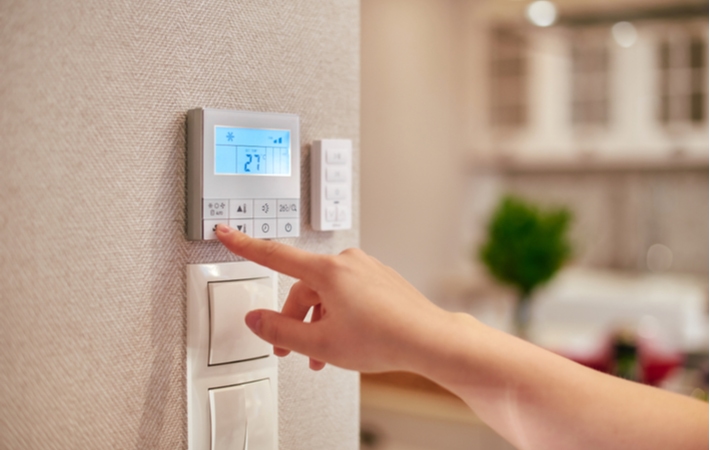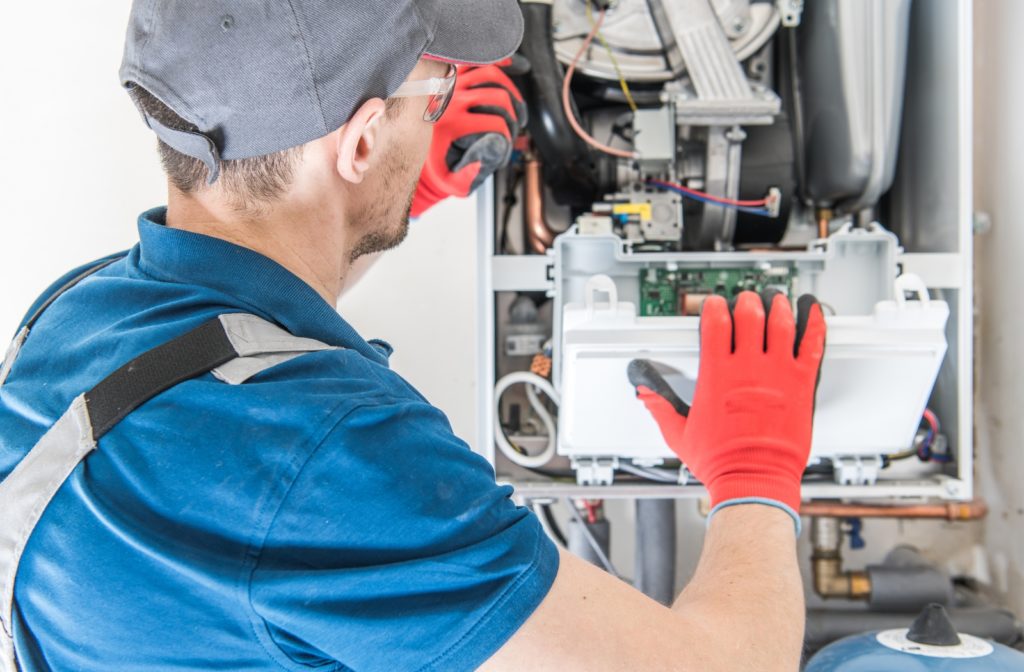Think of your heating and cooling system as the heart of your home; it needs to be working in tip-top shape to ensure your entire family is comfortable throughout the year. However, issues can happen over time and possibly lead to unwanted stress and some hefty repair costs.
At Lee’s Air Plumbing & Heating, we’re proud to provide California families with high-efficiency, high-quality solutions for their furnace troubles. One of the main ways you can avoid spending a pretty penny on repairs and replacements is by having our team perform routine maintenance checks before each heating season.
There are several common issues our team looks for when we’re performing a routine maintenance check. By addressing these problems as early as possible, you’ll be able to rely on your furnace with confidence.
No matter the season, quality home heating could mean the difference between a “house” and a “home.” Protect your family’s right to comfortable living when you contact us today to book your furnace maintenance appointment.
How Does a Furnace Work?
Before we dive into the most common issues a furnace might experience, it is important to understand how a furnace works. Knowing how your furnace delivers heated air to every room of your house can help you determine and troubleshoot some basic furnace problems.
Most homes have a gas-powered furnace, so the process generally looks like this:
- You set your thermostat at a particular temperature to heat your home
- Furnaces cycle on and a few times an hour to keep your home warm
- Cool air is brought in through return ducts to your furnace
- An air filter cleans the cool air before it enters the furnace
- A blower motor pushes the air to a heat exchanger to warm up
- Gas-powered burners heat the air in the heat exchanger
- Warm air is pushed into your furnace ducts and around your home
As you can see, there is a lot at play when you simply want to warm your house up. So, what are the most common places an issue could develop?

Where Can Some Issues Develop?
While there are several common furnace problems you might experience, many of these affect only a handful of systems your furnace uses. Some of the most common places we find problems developing include:
Thermostat
The thermostat is the brain of your furnace system, and your home may have several thermostats located around the house. Newer Smart thermostats provide an extra level of control to your home heating system, sometimes giving you the ability to heat different zones of your home at different temperatures.
Furnace Filter
The furnace filter is a common piece of equipment that you can monitor and change yourself. You can find the furnace filter at the entrance of the blower motor chamber, where it cleans your home’s intake air.
Blower Fan
If the thermostat is the brain of your furnace, then think of the blower motor as its soul—without it, your furnace is just a hunk of metal that gets very warm throughout the day. Blower fans are usually located at the bottom of the furnace.
Heat Exchanger
The heat exchanger is where all the magic happens. The blower motor forces cool air into the exchanger, where it’s heated and eventually pushed out to the rest of the house.
Burners provide heat to the exchanger by warming up the combustion chamber; gases are expelled out of your home through the furnace flue.
Vents & Ducts
Your ducts are responsible for spreading heat around your home while also bringing back cool air for your furnace to heat up again.
The Most Common Furnace Problems
Now that we have a pretty good idea of the different working parts involved in a furnace, it’s time to look at the various issues a furnace could develop throughout its lifespan.
Before you go looking for the source of your issues, though, please give our experienced team a call to perform a routine furnace maintenance check. Because your furnace is likely using gas, our professionals can safely diagnose smaller issues before they become big problems for your home and wallet.
That being said, some of the most common signs of a furnace problem can include:
Having High Heating Bills
Some furnace problems can occur without any signs, that is until you take a look at your heating bill at the end of the month. Generally, what is happening is that you’re heating your home too often or too high to stay comfortable.
Several issues can lead to high heating bills, including:
- Dirty furnace filters
- Blower motor problems
- Clogged or blocked vents or ducts
An Always Running or Noisy Blower Motor
Some people experience what is commonly known as a “noisy furnace.” Usually, it’s your blower motor that’s causing all the ruckus.
If your blower motor is always on, you might have the fan option on your thermostat set to “on.” If your blower motor is just really noisy, there might be a chance it needs a belt replacement or some light oiling.
Furnace “Short Cycling”
Short cycling furnaces don’t necessarily mean there’s a problem; your furnace may short cycle from time to time to maintain a certain level of temperature during a particularly cold day.
However, fault thermostats, dirty air filters, or blocked vents may cause your furnace to short circuit.
Too Hot or Too Cold Temperatures
If your furnace isn’t giving you the temperature you want, there could be an issue between your thermostat and furnace.
Thermostats and furnaces have to communicate perfectly with each other to bring you the home comfort you deserve, but issues like low batteries or faulty wiring can make it difficult to heat your home.
Rattling Vents
Your vent and duct system is absolutely vital to providing suitable comfort around your entire home. However, if you notice rattling or other noises, it might be time to get a professional to clean your ducts.
No Pilot Light
Pilot lights are essential for lighting your gas burners and heating your home. If your pilot light goes out, make sure you turn off the gas to your furnace immediately. Leaking gas is incredibly dangerous to your health and safety.
In some cases, you could reignite the pilot light yourself by following your furnace owner’s manual to the letter, but we recommend speaking to our team first before attempting this.
A Smelly Furnace
Your furnace may develop smells for a variety of reasons, including a dirty air filter, burning dust, or evaporating moisture.
However, several smells could signal a more significant problem:
- Rotten egg odors could signal a gas leak
- Chemical odors could be a sign of heat exchanger damage
- Burning rubber and metal could be a sign of electrical burns
To be safe, we recommend turning off your furnace speaking to our team immediately if you notice any odd smells. We’ll dispatch a technician and get to work determining what the source of the smell may be.

